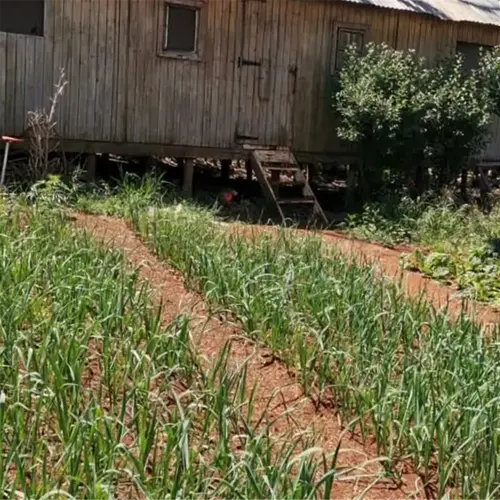How to Grow Lettuce: Expert Tips for Every Gardener

Written by
Benjamin Miller
Reviewed by
Prof. Martin Thorne, Ph.D.Lettuce needs 6 hours of sunlight and 6-7 pH soil to grow
Spacing of 6-18 inches between plants is best
Shade cloth rated for 30% use will help prevent bolting lettuce that reaches >75°F degrees
Leaf lettuce can be harvested weekly with a cut and come again technique
Container gardening is 1 lb per 12 inch pot as long as it has drainage
Sow spring crops every 14 days for continuous summer harvest
Article Navigation
Finding out how to cultivate lettuce allows us to activate smaller places into factories of salad of our design. Garden varieties of lettuce can mature three times faster than lettuce purchased at the market. Starting from a pot on a windowsill or a planter on your balcony are great way to begin. You can even utilize a fire escape to create a garden if you plan and manage accordingly.
Urban gardeners frequently take lettuce's adaptability for granted. I've successfully cultivated butterheads in upcycled shoe organizers hung from my apartment railings. The real magic occurs after you've made a match between varieties and your growing space. Of course, where heading varieties may fail, compact leaf types might succeed best.
Protecting crops from heatwaves is a game-changer for growing abundance instead of despair. My preferred solution at 75°F, is applying 30% shade cloth to crops. Vertical gardens with staggered plantings allow for doubled production in restrictive spaces. All of these tools also help eliminate bolting and enhance flavor.
Container garden myths fall apart under proper care. Just because something is grown in a 12-inch pot doesn't mean it won't produce equal harvests to a ground bed grown with lesser care and a consistent watering schedule! Depth is much more important than width when it comes to planting. And we will learn many space-saving tricks in the following sections.
Ideal Growing Conditions
To become an expert in how to grow lettuce, temperature control is the first principle to understand. Seeds germinate at 40°F (4°C) but bolt when the soil reaches 80°F (27°C). I also plan my planting time based on a meat thermometer buried two inches into the soil. You can use cold-weather types like Winter Density to extend your lettuce-growing season.
Soil pH is key to how crunchy your harvest will be. My ritual of crushed eggshells not only adds calcium but also helps to balance the acidity of the soil. Before planting, I sprinkle a handful of crushed eggshells over each square foot of soil. Testing kits found at garden centers will help you avoid guesswork. In general, looseleaf kinds of lettuce handle a 6.0-7.0 pH better than crispheads.
Selecting the right shade cloth can be the difference between thriving in the summer months versus wilting in misery. For reference, I use a 30% density cloth when air temperatures reach 75°F (24°C). I switch to a 50% shade cloth when the temperatures are at or above 85°F (29°C) during a heat wave. I drape mine over PVC hoops to allow proper airflow. I have saved the crop I planted in July (for the past three years) using this technique.
It is the depth of watering that determines whether your lettuce develops crisp heads or bitter leaves. In practice, you should push a finger into the soil daily. If the soil is dry to the first knuckle (unless you have very long nails), then soak the bed. Use drip lines six inches apart to prevent wet leaves from rotten. A mulch protects moisture while allowing roots to breathe.

Temperature Zones
- Optimal Range: 60-65°F (16-18°C) for maximum leaf production
- Germination Requirements: Minimum 40°F (4°C) soil temperature for 5-10 day sprouting
- Frost Tolerance: Mature plants survive 28°F (-2°C) for up to 4 hours
- Heat Stress: 30% shade cloth reduces leaf scorch above 75°F (24°C)
- Daily Variation: 10°F (6°C) difference between day/night improves texture
- Row Cover Benefits: Extend growing season by 4-6 weeks using frost blankets
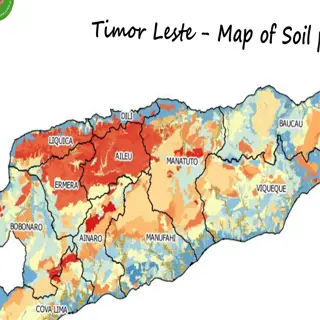
Soil pH
- Testing Methods: Digital meters show instant results vs litmus paper kits
- Acidic Soil Fix: Apply 5 lbs dolomite lime per 100 sq ft (2.3 kg/9.3 m²)
- Alkaline Soil Fix: Mix 1 lb sulfur powder per 100 sq ft (0.45 kg/9.3 m²)
- Compost Ratio: Blend 3 parts native soil with 1 part compost for drainage
- Perlite Layer: Add 2-inch (5 cm) depth to prevent waterlogging
- Testing Schedule: Check pH every 45 days during active growth phases
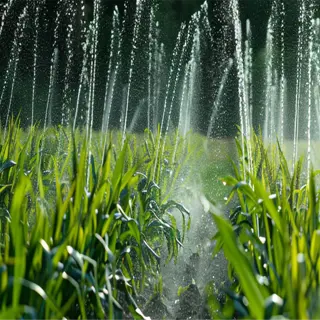
Watering Practices
- Root Zone Depth: Saturate soil to 6 inches (15 cm) for mature plants
- Timing: Morning watering reduces fungal risks by 70% compared to evening
- Mulch Comparison: Straw retains 30% more moisture than grass clippings
- Drip System Flow: Use 0.5 gal/hr (1.9 L/hr) emitters for even distribution
- Drought Indicators: Wilting after 10 AM sun requires immediate hydration
- Humidity Control: Maintain 40-60% levels using companion planting shade

Sunlight Management
- Minimum Exposure: 4 hours daily for basic leaf development
- Ideal Duration: 6 hours with morning sun/afternoon shade combination
- Shade Cloth: 30% density reduces bolting by 50% in summer
- Reflective Mulch: Aluminum foil increases light by 20% for indoor grows
- Window Orientation: South-facing windows provide optimal indoor light levels
- Artificial Lighting: 14-16 hours under 6500K LEDs for hydroponic systems

Wind Protection
- Damage Threshold: Winds above 15 mph (24 km/h) tear leaves
- Barrier Height: 18-inch (45 cm) fences reduce wind speed by 60%
- Companion Plants: Corn stalks buffer wind while allowing light penetration
- Staking Method: Use 12-inch (30 cm) bamboo stakes for young plants
- Row Cover Weight: 0.5 oz/sq yd (17 g/m²) fabric prevents tearing
- Container Security: Heavy pots with 2-inch (5 cm) gravel base
Choosing and Planting Varieties
Selecting lettuce types starts from germination timing. Heirloom seeds such as Black Seeded Simpson may germinate between 7-14 days, while hybrid blends may germinate in roughly 5-10 days. I favor hybrids to plant, as they are quicker for a balcony crop; I generally reserve the heirlooms to plant in the fall, focusing on flavor rather than timing for planting.
With compact varieties, you no longer have to worry about space. I grow Tom Thumb butterhead in 6-inch (15 cm) pots - you could even re-purpose those yogurt containers. It has an 8-inch spread that makes it an ideal edible border around tomato plants. Being able to mix a variety of colors adds a visual aspect to your summer garden and confuses pests.
Soil needs can widely diverge across various types. For instance, looseleaf lettuce requires mixes that are rich in nitrogen (for which I stir in used coffee grounds weekly). Crispheads need consistent calcium (e.g. crushed eggshells placed in layers at planting to preserve center tip from burning). Important to remember: always perform a soil test before growing any specific variety.
Succession planting will swap an intermittent harvest for a steady harvest of greens. Simply sow new seeds or plug and transplant new crops every 10-14 days, using the weather clime, as your guide. In the vertical garden, I have three staggered crops planted at any temporal point - baby greens/cuts on the top trade and mature heads below. I interplant with radishes to mark rows. 드

Seed Depth Guide
- Looseleaf: ¼-inch (6 mm) depth in fine-textured soil
- Romaine: ½-inch (1.3 cm) depth for stronger root establishment
- Butterhead: Surface-sow with light vermiculite cover
- Crisphead: ⅜-inch (1 cm) depth in firm seedbeds
- Microgreens: Broadcast seeds on surface with mist watering
- Pre-germination: Soak seeds 4 hours before planting
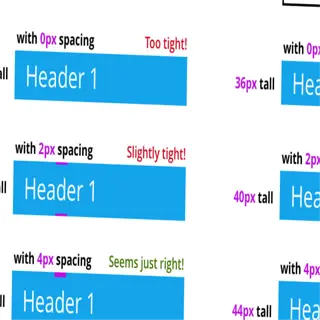
Spacing Systems
- Square Foot: 4 plants/sq ft (0.09 m²) for baby leaves
- Diagonal Grid: 10% more plants in raised beds
- Interplanting: Alternate with 14-day radish markers
- Succession Rows: New plantings every 10-14 days
- Vertical Layers: Hanging baskets above ground plantings
- Edible Borders: Mix with dwarf marigolds

Companion Plants
- Root Allies: Radishes break soil crust
- Aromatic Partners: Garlic deters aphids at 36-inch (90 cm) intervals
- Nitrogen Fixers: Bush beans 18-inch (45 cm) from rows
- Shade Providers: Tall cosmos on west side
- Pollinator Magnets: Nasturtiums attract hoverflies
- Trap Crops: Chervil 12-inch (30 cm) away lures slugs
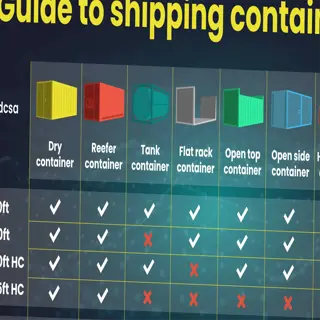
Container Varieties
- Window Box Stars: Tom Thumb in 6-inch (15 cm) pots
- Self-Watering Pots: 12-inch (30 cm) reservoirs for crispheads
- Hydroponic Options: Jericho in NFT systems pH 5.8-6.2
- Hanging Baskets: 3 Oakleaf plants per 14-inch (35 cm) basket
- Stackable Planters: 9 varieties in 4 sq ft (0.37 m²)
- Mobility Tips: Casters on 5-gallon (19 L) buckets
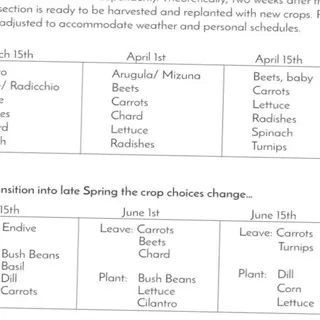
Succession Planting
- Spring Start: 2 weeks before last frost date
- Summer Gaps: Switch to Jericho variety June-August
- Fall Push: 6-week intervals before first frost
- Winter Crops: Cold frame zone-specific calendars
- Seed Quantity: ½ tsp (2.5 mL) per 10-foot (3 m) row
- Color Rotation: Alternate red/green varieties
Space Optimization Techniques
Unlike planting in traditional rows, Vertical gardening can yield three times the amount of lettuce. My 4x4-foot tower produces 36 plants as opposed to 12 in the ground beds. You can use hanging pockets and stacked crates as well. Lettuce can grow up or horizontally. Oakleaf lettuce prefers to grow upwards while romaine lettuce can be utilized in horizontal space to fully develop the lettuce head.
Multi-layered containers create 'salad factories' in your limited space. I use old bookshelves and build a three-tiered garden on the shelf - rosemary or basil on top, followed by lettuce, then radishes on the bottom shelf. I get 1.5 lbs per square foot with this system! The key is to line the shelves with a pond liner to hold moisture.
Consider interplanting radishes as a living calendar marker of sorts. Specifically, sow seed between lettuce every 14 days. Radish sprouts are a timely indicator as to when to harvest the baby greens. Plus, their rapid growth style will minimize the crusting of the soil - I typically pull them just as the lettuce requires additional root space.
The rails of a balcony can transform into prime territory for clamp-on planters. My 18-inch troughs produce 12 butterhead lettuces a month. Use lightweight soil mixtures to help with the weight of plants and soil for load-bearing structures. Rotate planters every week to help ensure even sun exposure for plants. Mixing flowers in with the lettuce can help deter pests naturally.

Vertical Stack Systems
- Tiered planters: 3 levels in 18-inch (45 cm) height
- Wall pockets: 16 plants/sq ft (0.09 m²) using felt pouches
- PVC pipe towers: 6 varieties in 1 sq ft (0.09 m²)
- Espalier nets: Train vines around lettuce for shade
- Window frame grids: 12 plants per 24x36-inch (60x90 cm) frame
- Maintenance: Drip lines with 0.25 gal/hr (1 L/hr) emitters
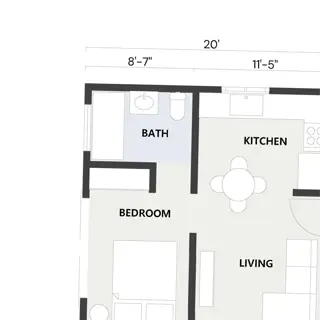
Square Foot Layouts
- Baby leaf density: 9 plants/sq ft (0.09 m²)
- Mature head spacing: 4 plants/sq ft (0.09 m²)
- Diagonal planting: 10% more plants than grid layout
- Color rotation: Alternate red/green varieties for visual tracking
- Succession cells: Replace 25% plants weekly
- Harvest aid: Scissors-on-pole for easy reach
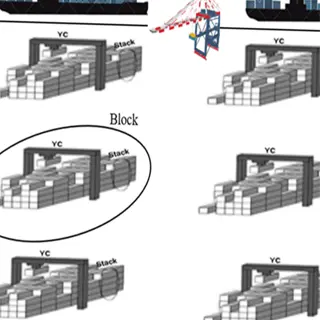
Container Strategies
- Stackable boxes: 3 tiers in 24-inch (60 cm) width
- Gutter gardens: 10-foot (3 m) run yields 15 heads
- Shoe organizers: 16 pockets = 16 mini plants
- Wheeled bases: Rotate 180° daily for even sun
- Self-watering: 1-gallon (3.8 L) reservoir lasts 5 days
- Shade pairing: Tall herbs in adjacent pots
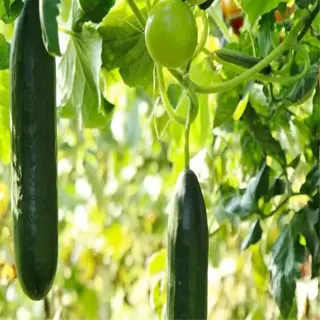
Companion Efficiency
- Radish markers: Sow between rows for 14-day harvest
- Bean towers: Grow pole beans above lettuce shade
- Garlic borders: Plant every 12-inch (30 cm) for pests
- Carrot underplanting: 6-inch (15 cm) roots below lettuce
- Marigold dots: 1 flower per 9 lettuce plants
- Dill clusters: Attract beneficial wasps
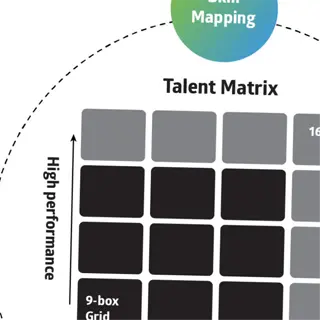
Succession Mapping
- Weekly sowing: ¼ oz (7 g) seeds per 10 sq ft (0.9 m²)
- Color coding: Red tape for fall crops, green for spring
- Nursery zone: Dedicate 20% space for seedlings
- Interruptible rows: Replace bolted plants in 2 hours
- Seed tape: Pre-spaced 4-inch (10 cm) intervals
- Moon phases: Sow waxing moon for leaf growth
Essential Care and Maintenance
Watering lettuce changes rapidly as the plant develops. Seedlings need to be watered every day, usually by misting, but a mature lettuce head is best watered deeply once a week. In the summer, my cheat is to use empty tuna cans as a rain gauge - 1 inch (2.5 cm) weekly will help lettuce from becoming bitter, and winter crops can get by on 0.5 inches (1.3 cm) effortlessly.
The quality of leaves depends upon the use of organic fertilizer. Leaf varieties need a 5-1-1 NPK ratio,I make nettle tea to provide that boost in nitrogen. Heading types such as Icebergs prefer a 3-4-4 blend; I improve cell structure by mixing crushed oyster shell powder into the soil before planting.
The first aspect of pest prevention is neighbors that are purposely planted. I plant garlic every 18 inches (45 cm) between my rows of lettuce - S compounds repel aphids. Marigold border flowers intercept cabbage moths - replace this monthly to avoid using pesticides for continuous protection.
Pruning is more effective than shade cloths in preventing bolting. Once your plants achieve a growth height of 6 inches (15cm), snip off the outside leaf tips at a 45° angle. This will divert the energy to the roots. For me, my record is 63 days until flowering with heirloom varieties. Always wipe the shears clean with vodka in between plants.

Water Management
- Seedling stage: ½ inch (1.3 cm) water daily
- Mature plants: 1 inch (2.5 cm) every 3 days
- Container alert: Check moisture twice daily in heat
- Mulch types: Straw retains 30% more moisture than bark
- Drought signs: Wilting after 10 AM sun exposure
- Overwatering fix: Add perlite to soil mix
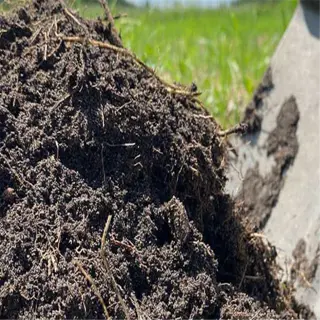
Organic Fertilizers
- Fish emulsion: 5-1-1 NPK every 14 days
- Compost tea: 1:10 dilution for weekly use
- Worm castings: ½ cup (120 ml) per plant monthly
- Banana peel tea: Potassium boost for heading types
- Eggshell powder: 1 tablespoon (15 ml) per plant for calcium
- Timing: Stop feeding 2 weeks before harvest
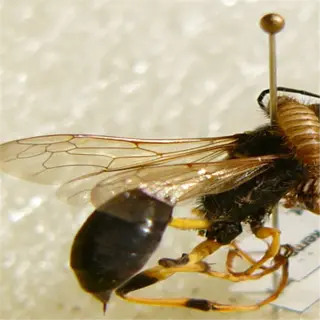
Pest Control
- Aphid solution: 2 teaspoons (10 ml) neem oil per quart (1 L)
- Slug traps: Beer in 4-inch (10 cm) deep containers
- Row covers: 0.6 mm mesh for caterpillar prevention
- Companion plants: Nasturtiums repel 14 pest species
- Diatomaceous earth: Reapply after rain
- Night patrol: Handpick slugs at 10 PM
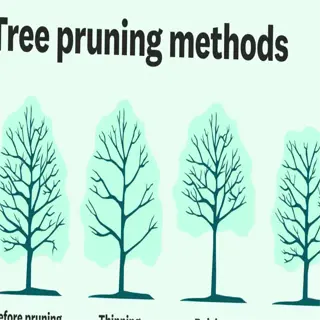
Pruning Methods
- Outer leaves: Cut at 1-inch (2.5 cm) from base
- Bolting delay: Remove flower stems at 3-inch (7.6 cm)
- Airflow boost: Remove 10% of inner leaves weekly
- Tool care: Dip shears in vodka between plants
- Harvest pruning: 30% maximum removal per session
- Regrowth cycle: New leaves in 5-7 days
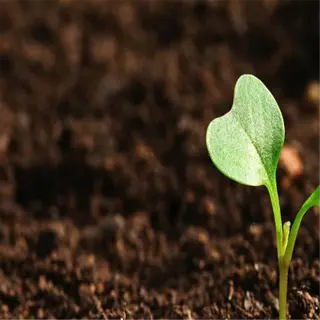
Soil Health
- Mycorrhizal boost: 1 teaspoon (5 ml) per planting hole
- Compost layer: 2-inch (5 cm) topdress monthly
- Aeration fix: 20% vermiculite in clay soils
- Winter prep: Bury fish heads 6-inch (15 cm) deep
- pH balance: Crushed oyster shell mulch
- Cover crops: Clover between lettuce rows
Harvesting and Bolting Solutions
When to harvest depends on the crispness of the lettuce. The most crunchy leaves come from cutting in the morning after the dew has dried. If harvested at night, the lettuce can lose approximately 15% of its crispness by noon the next day. In my market runs, I pack lettuce plants into insulated bags with ice packs. For personal use, plunge the stems right after picking into an ice water bath.
This three-stage bolting defense begins before heat stress presenting. Initially, only under 75 degrees, get some 30% shade cloth. Secondly, use 2 inches of mulch. And finally, once a week apply chamomile tea - its azulene content in chamomiles tends to slow down stem development of flowers to delay bolting to a maximum of 3 weeks during trials.
If managed appropriately, bolted plants can turn into seed factories. Just let the flowers dry out on the plant themselves; the brown petals and seeds will indicate it is ready. You rub the flower heads over screening to separate the seeds from the chaff. The seeds should be placed in glass jars with silica packets - I have stored some seeds for 3 years that still germinate about 70 % of the time.
Cut-and-come-again systems are more productive than single harvests. Cut leaves 1 inch/2.5 cm above the crown, at a 45° angle. Expect new growth in 5-7 days - stagger the cuts around the plant. I rotate six of the plants in week intervals, to have a steady supply of salad all season long.
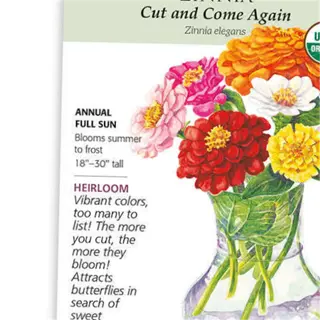
Cut-and-Come-Again
- First harvest: 3-4 weeks after planting at 4-inch (10 cm) height
- Tool angle: 45° cut 1 inch (2.5 cm) above crown
- Regrowth time: 7-10 days between harvests
- Max harvests: 5 cycles before replanting
- Night harvest: 40% longer crispness retention
- Sanitization: Wipe blades with vodka between plants

Full Head Timing
- Maturity signs: Firm heart with 12+ outer leaves
- Morning harvest: Cut at soil line before 9 AM
- Chilling: 1 hour in ice water (35°F/2°C) pre-storage
- Storage wrap: Damp parchment paper in perforated bags
- Root revival: Replant with 2-inch (5 cm) stem in water
- Yield boost: Side-dress with bone meal pre-harvest

Bolting Delay
- First signs: Vertical stem growth over 6 inches (15 cm)
- Shade cloth: 30% density above 75°F (24°C)
- Stress reduction: Consistent 1-inch (2.5 cm) water weekly
- Growth retardants: Chamomile tea spray every 3 days
- Night cooling: Run sprinklers at 2 AM during heat waves
- Variety swap: Replace with Jericho every 60 days

Post-Bolting Use
- Seed collection: Bag flowers at 50% bloom stage
- Stem recipes: Pickle 6-inch (15 cm) flower stems
- Compost tea: Ferment bolted plants for 3 weeks
- Pest trap: Leave 1 plant/5 sq ft (0.46 m²) for aphids
- Biomass chop: Drop foliage as mulch around plants
- Root removal: Prevent allelopathy with complete extraction
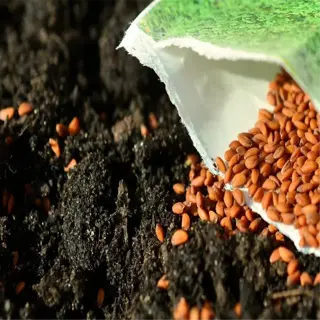
Seed Saving
- Isolation distance: 20 feet (6 m) between varieties
- Harvest time: When 50% seed fluff appears
- Cleaning: Rub heads over ¼-inch (6 mm) mesh screen
- Storage: Glass jars with 1 tbsp (15 g) rice as desiccant
- Viability: 85% germination after 3 years
- Labeling: Include harvest date and soil pH
5 Common Myths
It is essential that lettuce receives full sunlight for 8 hours every day for it to grow to its full potential.
Lettuce does best in 4 to 6 hours of sun, and benefits from afternoon shade when grown in hot climates. In partial shade, lettuce will not bolt flowering, and the leaves will not lose tenderness as rapidly as with full sun exposure, especially butter-type and oak leaf varieties.
Once lettuce bolts the plant can no longer be eaten and is in fact toxic.
While the bolted lettuce leaves become bitter they are still non-toxic. Bolted flowers attract pollinators, and stems can be pickled. Lastly, seeds saved from bolting plants are typically 85% viable for the next season's crop.
Iceberg lettuce is a challenge for homecooks to grow successfully.
Iceberg requires accurate 55-70F (13-21C) temperature and regular watering but is grown well in cool climates. When temperatures go above 75°F (24C), shade cloth should be used. Harvest is at 70 days.
Lettuce seeds older than one year will not germinate very well.
Properly stored lettuce seeds in sealed containers at 40°F(4C) still have a 70% viability after three years. If you pre-soak older seeds in a kelp solution for 12 hours before planting you can increase the germination rate between 20-40%.
To grow high-yield lettuce in a container requires you use a chemical fertilizer.
Organic container mixes that contain 30% compost produced yields equal to the best chemical-fed plants. Fish emulsion (which has a 5-1-1 NPK rating) can be applied biweekly to provide plant nutrients for lettuce and there will be no salts accumulating in confined root zones.

Shade-Grown Success
- 30% shade cloth increases yield by 25% in zones 8-10
- Oakleaf variety shows 40% slower bolting under afternoon shade
- Solar radiation reduction: 450 W/m² vs 700 W/m² full sun
- Soil temp maintenance: 65°F (18°C) vs 80°F (27°C) uncovered
- Leaf thickness improvement: 0.3 mm vs 0.2 mm in full sun

Seed Longevity Proof
- 3-year-old seeds: 72% germination with proper cold storage
- Viability test: 10 seeds on damp paper towel for 5 days
- Pre-chilling technique: 48 hours at 35°F (2°C) boosts rates
- Heirloom vs hybrid: 15% better longevity in open-pollinated types
- Moisture control: Silica gel maintains <8% humidity in storage

Bolted Plant Uses
- Flower stalks contain 3x more calcium than leaves
- Seed collection: ½ oz (14 g) per mature plant
- Compost tea nutrient analysis: 2-1-3 NPK ratio
- Trap cropping: 1 bolted plant protects 5 sq ft (0.46 m²)
- Stem fiber content: 2.1g dietary fiber per 100g

Container Yields
- Self-watering pots yield 1.2 lbs (544 g) per 12-inch (30 cm) container
- Organic mix formula: 3 parts peat, 1 part compost, 1 part vermiculite
- Fertilizer comparison: Fish emulsion vs synthetic NPK shows equal biomass
- Root depth: 8-inch (20 cm) pots prevent 90% of bolting stress
- Succession planting: 3 crops/year in zones 5-9

Transplant vs Seed
- Direct-sown seeds show 20% higher survival rates after 60 days
- Cost analysis: $0.02/seed vs $3.50/store-bought transplant
- Root disturbance study: 15% yield drop when transplanting late
- Hybrid advantage: Transplants mature 10 days faster than seeds
- Seedling hardening: 7-day acclimation prevents 80% of transplant shock
Conclusion
Successfully growing lettuce depends on its impressive adaptability to our diverse climates. There are varieties of lettuce suitable for Alaskan summers of below-freezing temperatures to extremely dry climates such as Arizona. I've grown crispheads from a rooftop container and looseleaf lettuce from an old dresser drawer and this proves that salad-growing ambitions should never be limited just due to space.
Yielding harvests year-round becomes possible with a succession planting plan. Stagger seeds in the same container every 10-14 days as long as you have multiple containers. My wagon system, for example, serves as a three-tiered growing area, allowing me to grow seedlings, mid-cycle, and mature heads all at once. I can get 8-10 cuttings a year with this system, so there's no need for grocery store lettuce from April to December.
In my cost comparisons, I discovered some pretty astounding savings. The "store" plant costs $3.50 and equals 175 starts from homegrown seeds that are $0.02. Use heirloom varieties, and you can cut that seed cost out completely- I still get 80% germination from my 3-year-old Black Seeded Simpson stock. These savings add up, and in fact, here is a flat of new test crops that I purchased to trial, for example, red-veined Freckles lettuce.
The annual diversity trials keep our gardens fresh. Try to commit to two new types each season - a dependable producer like Buttercrunch paired with a wild card like Drunken Woman. Record flavor characteristics and growth habits. This practice turned a five-year-old urban plot into a living lettuce library.
External Sources
Frequently Asked Questions
How to grow lettuce successfully in home gardens?
To grow lettuce, provide well-draining soil with pH 6-7, 4-6 hours of sunlight, and consistent moisture. Space plants 6-18 inches apart depending on variety. Use organic fertilizer every 3 weeks and harvest outer leaves first for continuous growth.
Does lettuce need full sunlight to thrive?
Lettuce grows best with morning sun and afternoon shade. Excessive heat causes bolting. Use 30% shade cloth in warm climates. Leaf varieties tolerate more shade than head-forming types like iceberg.
Can you regrow lettuce after harvesting leaves?
Leaf lettuce regrows through cut-and-come-again harvesting:
- Cut outer leaves 1 inch above base
- Leave center growth intact
- Plants produce 3-5 harvests
- Discard when growth slows
What's the ideal container size for lettuce?
Use containers with:
- Minimum 6-inch depth for roots
- 12-inch width per plant
- Drainage holes to prevent rot
- Self-watering pots for consistent moisture
Why does my lettuce taste bitter?
Harvest earlier, provide shade, and maintain consistent watering to reduce bitterness.
- Over-mature leaves
- High temperatures
- Insufficient water
- Nutrient deficiencies
How to prevent pests from eating lettuce?
Organic pest control methods:
- Row covers for insects
- Beer traps for slugs
- Companion planting with garlic
- Neem oil spray weekly
Can I grow lettuce year-round?
Lettuce grows year-round using:
- Cold frames in winter
- Shade cloth in summer
- Succession planting every 2 weeks
- Indoor hydroponic systems
What vegetables should not be planted near lettuce?
Avoid planting near:
- Broccoli (competes for nutrients)
- Parsley (attracts harmful insects)
- Sunflowers (casts excessive shade)
- Cabbage family plants
How to revive wilted lettuce plants?
Revive plants by:
- Watering deeply in early morning
- Adding mulch to retain moisture
- Providing temporary shade
- Removing damaged leaves
Is store-bought lettuce suitable for regrowing?
Regrow store lettuce by:
- Placing stem ends in water
- Changing water daily
- Transplanting to soil after roots form
- Harvesting leaves within 2-3 weeks

